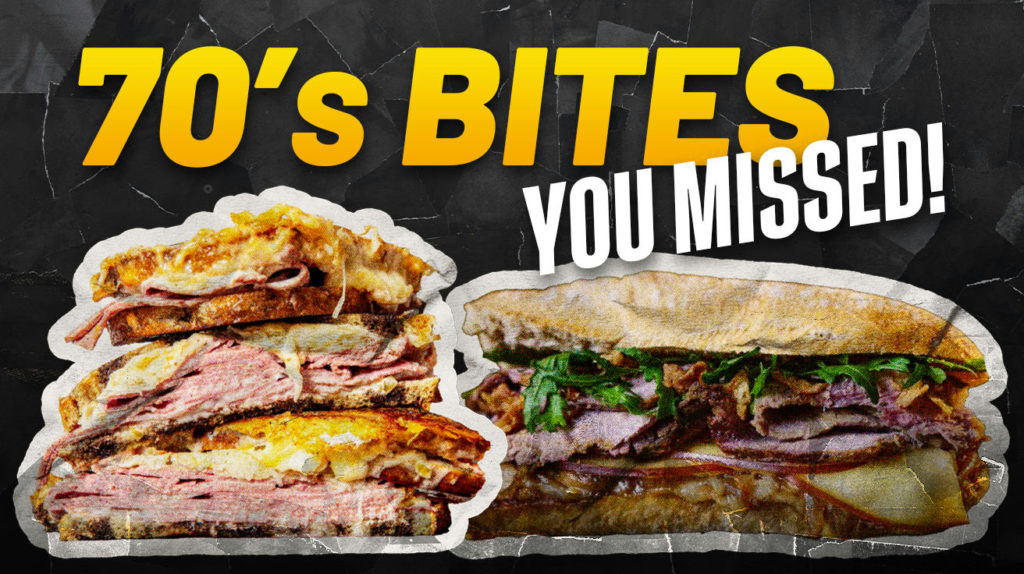
Listen, the 1970s weren’t just about bell bottoms and disco balls. While ABBA was telling you to take a chance, your lunch was taking chances of its own. This was the golden age of sandwiches – an era when bread-based innovation reached heights not seen since sliced bread itself (which, let’s be honest, was a pretty tough act to follow).
Ready for a nostalgic trip that’s more satisfying than finding money in your winter coat? These forgotten sandwich gems might just save you from the mind-numbing monotony of your current lunch rotation. Your taste buds are practically begging for this throwback tour – and who are we to deny them?
23. Tuna Salad Sandwich
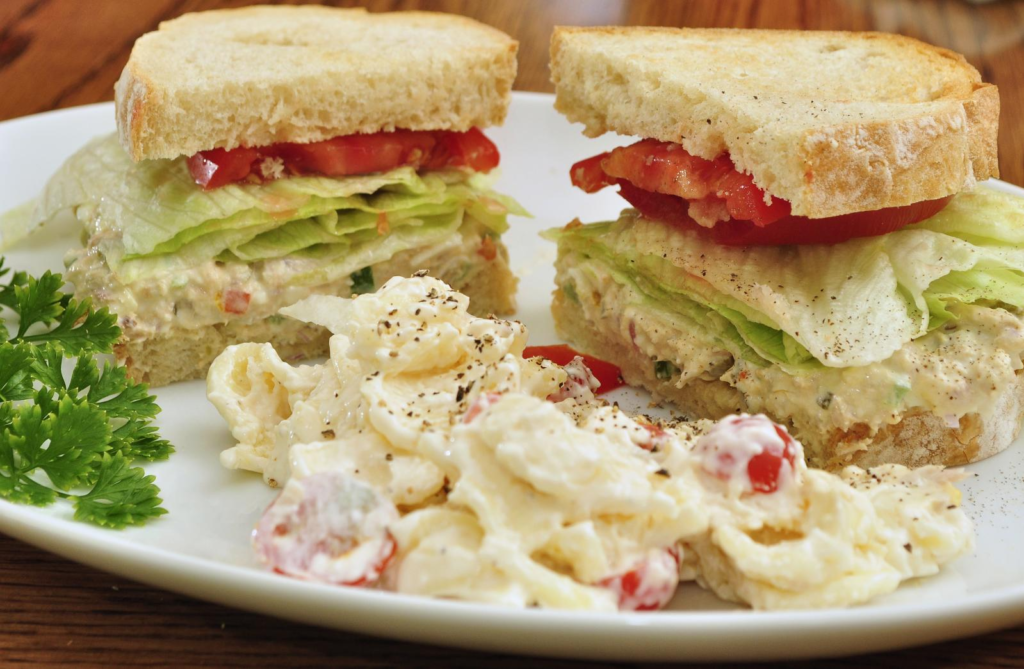
The 1970s tuna sandwich wasn’t just popular; it was the Beyoncé of lunch options – absolutely everywhere and universally recognized. This creamy concoction infiltrated lunchboxes with the stealth of a Cold War spy. Flaked tuna swimming in mayonnaise (and just enough celery to convince parents it was “healthy”) created the perfect illusion of nutrition.
Salt, pepper, and sometimes relish added just enough zest to distract from the fact that you were basically eating canned fish on bread. Schools served it so frequently that an entire generation experiences phantom tuna smells at the mere mention of cafeterias. It’s the sandwich equivalent of a reliable friend – not exciting, but there when you need it.
22. Peanut Butter and Jelly Sandwich
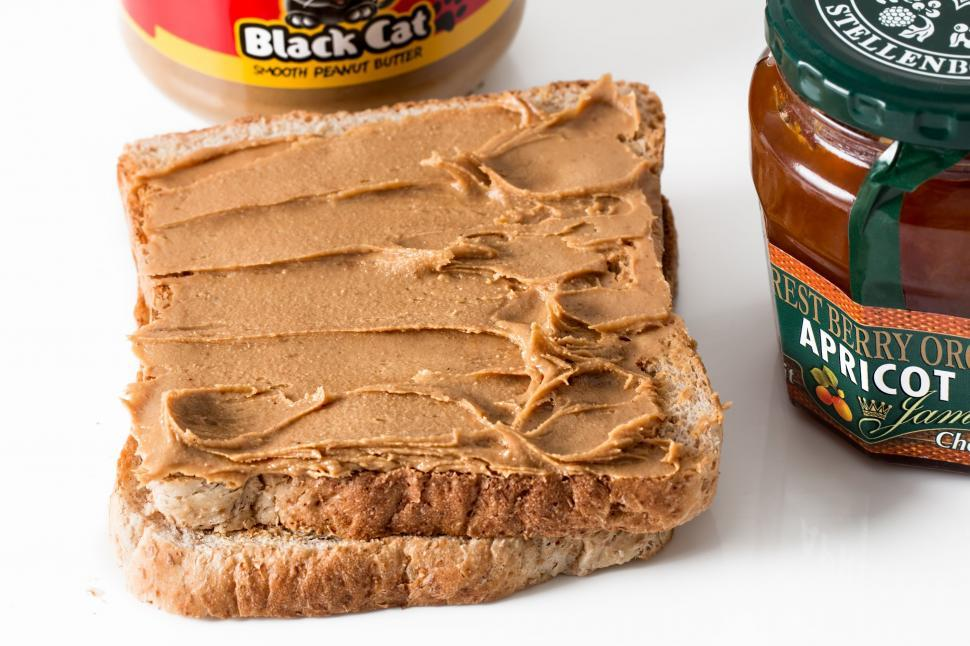
Let’s acknowledge the architectural masterpiece that is the PB&J – the sandwich equivalent of the pyramids, inexplicably perfect and seemingly designed to outlast civilization itself. This sweet-savory genius could be assembled in less time than it takes to find the TV remote (approximately 30 seconds for the sandwich, eternally for the remote).
Busy parents stockpiled Smucker’s like doomsday preppers, ready to slap together this lunchbox staple at a moment’s notice. While avocado toast might be hogging the Instagram spotlight these days, the PB&J remains the quiet icon of childhood – unfussy, reliable, and blissfully unaware it should be posting content to maintain relevance.
21. Ham and Cheese Sandwich
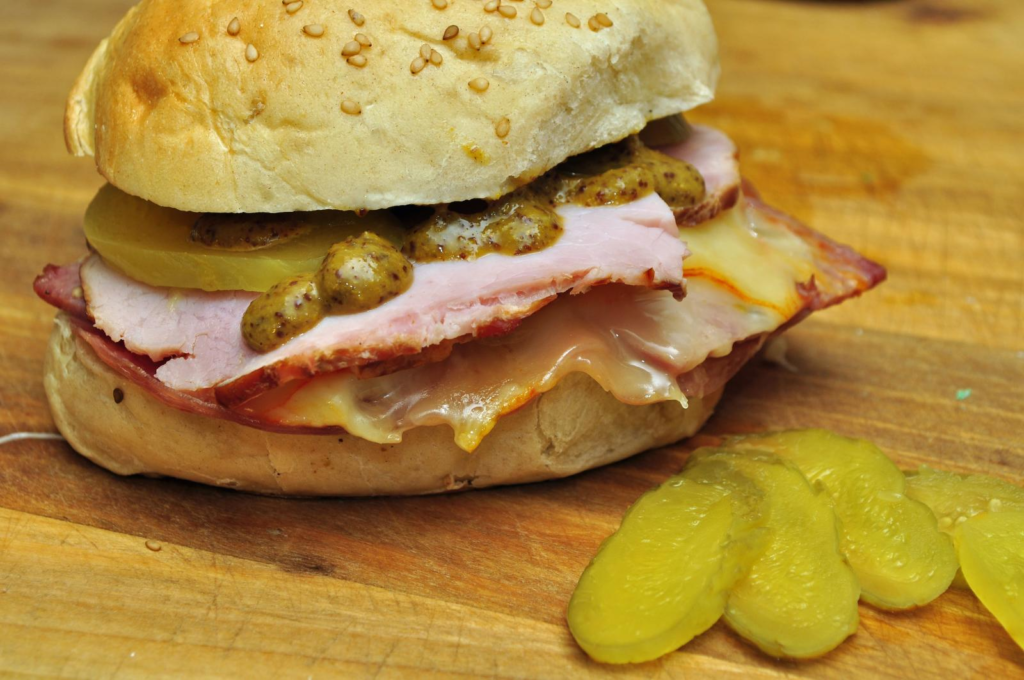
The ham and cheese sandwich is the beige wallpaper of lunch options – so unassuming you might forget it exists until someone mentions it, then suddenly you can’t stop thinking about how perfectly adequate it is. Built on the revolutionary concept that sliced ham and cheese might taste good together (shocking!), this sandwich dominated lunchboxes with the quiet confidence of someone who knows they’re not flashy but gets the job done.
A smear of mustard or mayo added just enough personality to make it interesting, like putting sunglasses on a mannequin. There’s something to be said for this classic – it’s the sandwich equivalent of a comfortable silence.
20. Turkey Sandwich
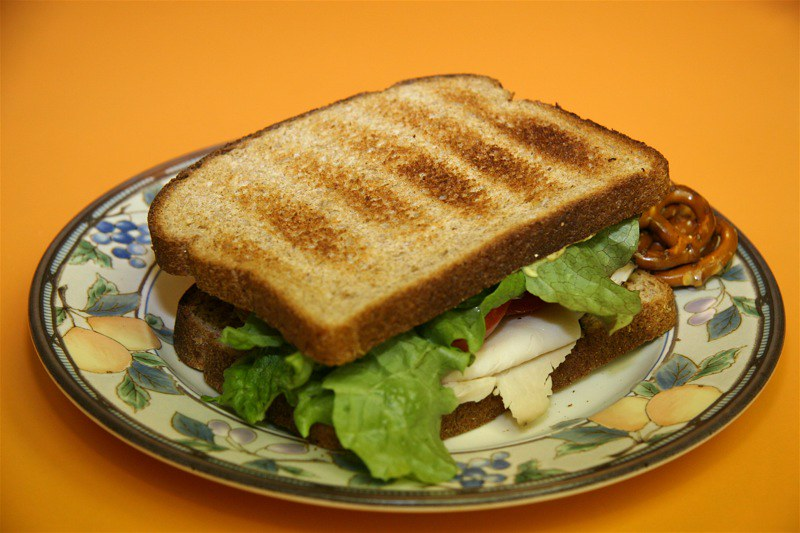
When the 1970s home cook faced the eternal question “What can I make that requires absolutely zero creativity but still counts as cooking?”, the turkey sandwich answered the call. This heroically bland creation – slices of turkey breast with perhaps a leaf of lettuce if you were feeling particularly fancy – promised nutrition without the burden of flavor complexity.
Mayo provided the only excitement, like adding a single white paint accent wall to an already white room. Yet somehow, in its steadfast refusal to surprise, the turkey sandwich found its niche. It’s the sandwich version of a rerun you’ve already seen six times but will watch again anyway because the remote is just too far away.
19. Pastrami on Rye

The pastrami on rye wasn’t just a sandwich; it was a cultural statement with the subtlety of a Broadway musical about sandwiches. Stepping into a deli in the 70s, you’d witness towering stacks of pastrami so high they required architectural permits, all balanced precariously on rye bread that somehow had to pretend it was up to the task (narrator: it was not).
Yellow mustard cut through the richness like a sarcastic comment at a family dinner – absolutely necessary and slightly uncomfortable. Delis served this sandwich with pride, blissfully ignoring the fact that it was physically impossible to eat without dislocating your jaw like a python swallowing a goat. The pastrami on rye endures as a testament to the American belief that more is always better (despite all evidence to the contrary).
18. Club Sandwich
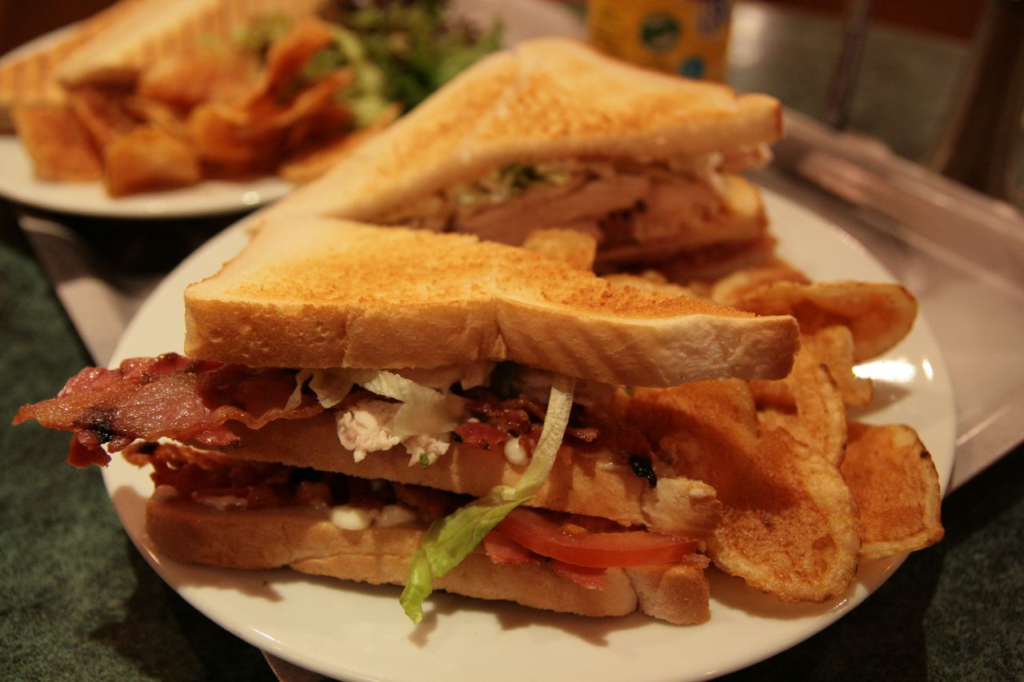
The club sandwich – for when you can’t decide between one or two sandwiches, so you settle for one and a half stacked like the leaning tower of lunch. This triple-decker monstrosity was considered the height of sophistication, proving once again that adding an unnecessary layer to anything instantly makes it fancy (see also: wedding cakes, corporate management, and British society).
Turkey, bacon, lettuce, and tomato stood tall between three slices of toast guaranteed to scrape the roof of your mouth like sandpaper. Mayonnaise bound it all together with the structural integrity of wet paper towels. The toothpicks holding it together weren’t just decorative – they were structural necessities, like flying buttresses on a medieval cathedral made of poultry and bread.
17. Reuben Sandwich

The Reuben sandwich is what happens when someone decides “Let’s take all the foods with strong personalities and force them to share an apartment.” This towering testament to excess piled corned beef, Swiss cheese, and sauerkraut together like argumentative roommates, then added Russian dressing as the passive-aggressive note on the refrigerator.
The marbleized rye bread (which absolutely must be buttered, as if the sandwich needed more richness) attempted to contain this dysfunctional flavor family with varying success. Every bite was a workout for your jaw muscles – the CrossFit of sandwiches. It’s the sandwich equivalent of that friend who always overdresses for casual events and refuses to feel bad about it.
16. Liverwurst on Rye

The liverwurst sandwich wasn’t just an acquired taste; it was a taste that required signing a legally binding contract and possibly some form of hazing ritual. This polarizing creation seemed designed specifically to separate the culinarily adventurous from the weak. Its creamy, intensely savory pâté spread on rye bread was the sandwich equivalent of an art house film – respected by critics but absolutely baffling to the general public.
The slight tang of rye bread attempted to complement the liverwurst like an optimistic matchmaker trying to set up two incompatible friends. Most modern palates run screaming from liverwurst like teenagers from a documentary, but for those brave enough to revisit this forgotten classic – congratulations on your courage (or concerning lack of self-preservation instincts).
15. Patty Melt

The patty melt emerged as the sophisticated rebel of the burger family – like the cousin who went to Europe once and came back with an accent and strong opinions about cheese. This diner staple placed a juicy burger between slices of rye bread like it was performing some kind of culinary witness protection program – “This isn’t a burger anymore; it’s a sandwich. No more questions.”
Caramelized onions and melted cheese completed this identity makeover with the confidence of a makeover montage in a 90s teen movie. Cooks grilled the entire creation until the cheese achieved that perfect molten state somewhere between solid and liquid – a phase of matter known only to diner chefs and nuclear physicists.
14. Grilled Cheese Sandwich
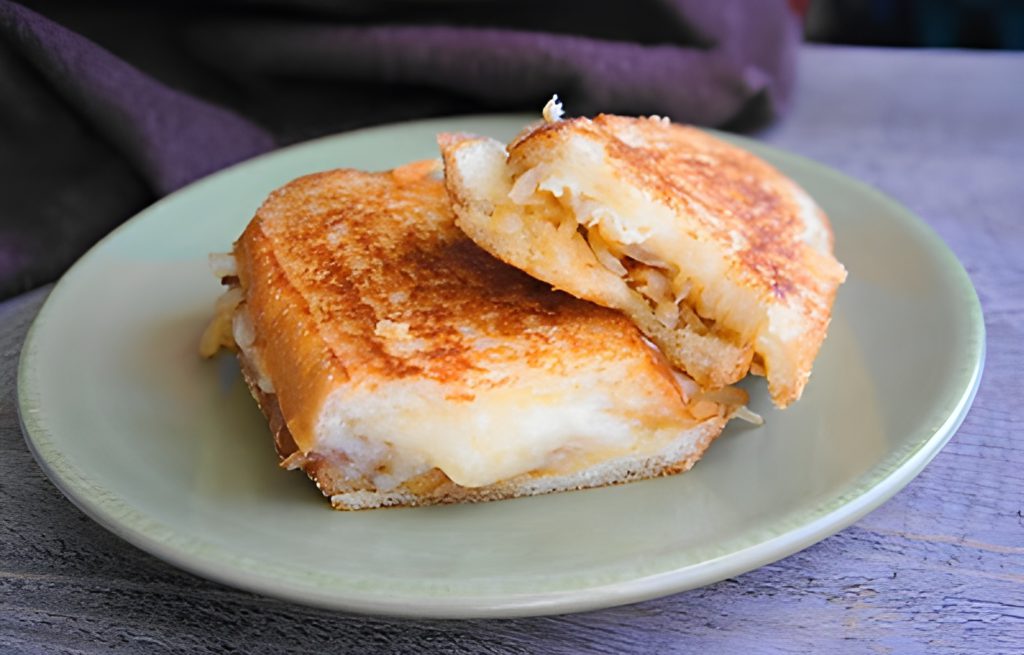
| License
The grilled cheese sandwich – proof that humanity occasionally gets things absolutely right on the first try. This marvel of simplicity saved dinner time for parents facing the culinary criticism of tiny dictators with undeveloped palates. The 1970s kitchen witnessed the almost religious ritual: butter sizzling in the pan, bread turning golden brown, cheese achieving that perfect melt-to-stretch ratio that scientists are still trying to quantify.
Sharp cheddar reigned supreme, though debates about the optimal cheese could end friendships faster than discussions about politics. The humble grilled cheese remains the comfort food equivalent of a security blanket – something you never really outgrow but pretend to be too sophisticated for until no one’s watching.
13. Tuna Melt
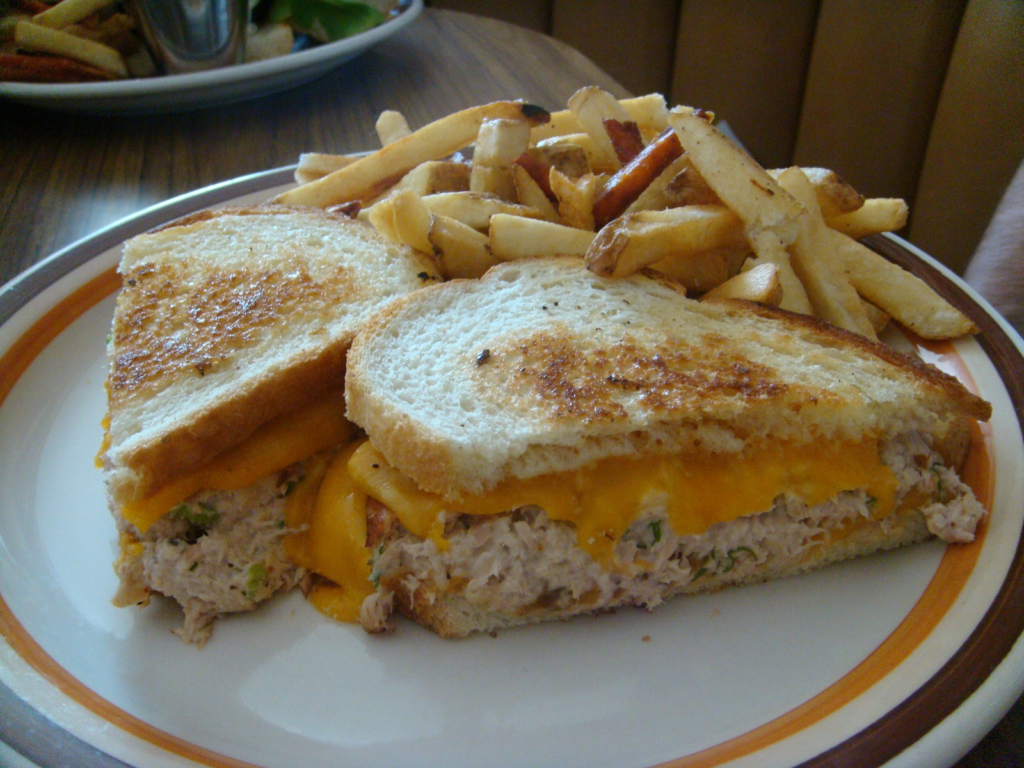
The tuna melt answered the eternal question: “What if we took something already questionable (canned tuna mixed with mayo) and then added a layer of melted cheese on top?” The result was either culinary genius or a crime against seafood, depending entirely on your perspective. This warm treat combined the lunchbox nostalgia of tuna salad with the comfort of melted cheese – the culinary equivalent of that odd couple friendship that defies all logic but endures anyway.
A tomato slice often added a token vegetable presence, trying desperately to bring nutritional dignity to the proceedings. The crispy, toasted bread held it all together with the determination of a kindergarten teacher on the last day before holiday break.
12. Chicken Parmesan Sandwich
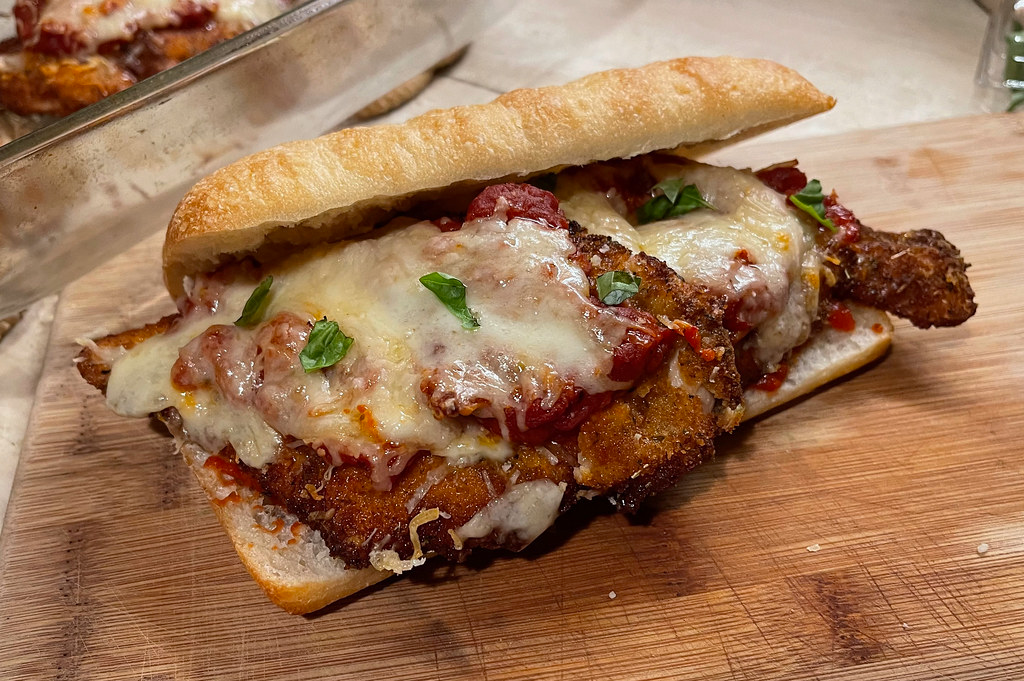
The chicken parmesan sandwich is what happens when Italian cuisine gets Americanized with all the subtlety of a tourist wearing socks with sandals in Rome. This magnificent creation stuffed breaded chicken, marinara sauce, and enough melted cheese to violate several laws of physics between two pieces of bread that frankly deserved hazard pay for their efforts.
Its warming comfort satisfied families looking for something that felt fancy but still appeased children with undiscriminating palates. The chicken parm sandwich gained quick recognition during the 1970s, riding the wave of Italian-American cuisine. It’s the culinary equivalent of disco – simultaneously cheesy and irresistible.
11. French Dip Sandwich
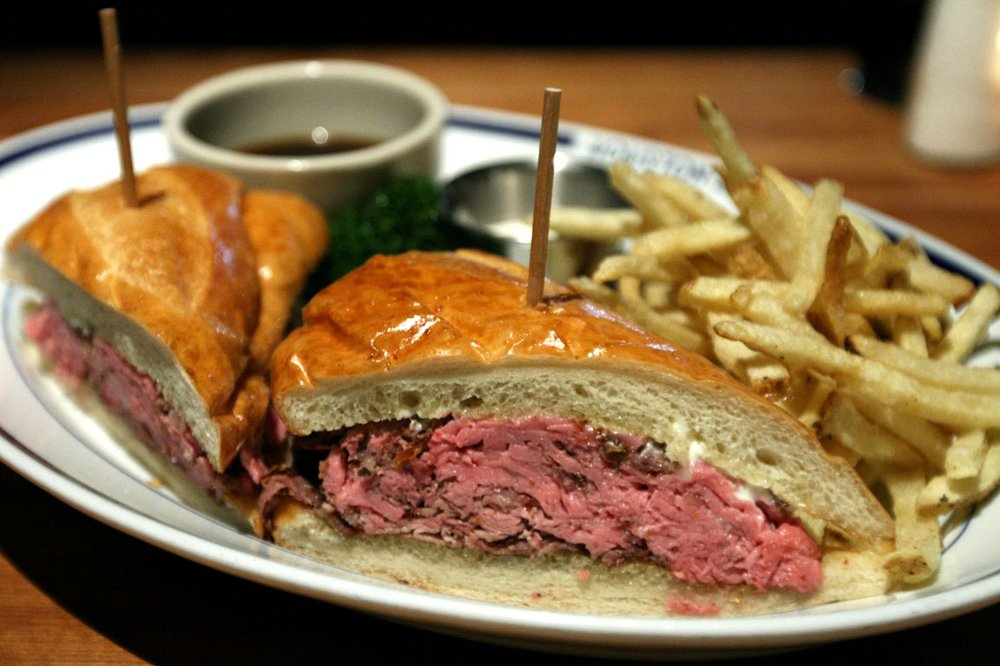
The French Dip elevated the humble sandwich to an interactive experience, like the dinner theater of lunch options. This elegant creation featured thin slices of roast beef on crusty bread, but the real star was the accompanying au jus – a savory beef broth that transformed eating into a dipping ritual more satisfying than any childhood snack.
Diners savored each tender, juicy morsel with the concentration of bomb disposal experts, carefully controlling the dip-to-bite ratio to prevent the dreaded over-sog (the sandwich equivalent of quicksand). The French Dip remains one of the few sandwiches that comes with its own swimming pool – proving that sometimes the best things in life are meant to get wet before enjoyment.
10. Meatball Sub

The meatball sub is structurally unsound engineering that somehow works – like a skyscraper made of Jell-O that defiantly remains standing. This saucy behemoth nestled spherical meat missiles in a submarine roll with the precarious balance of a cat on a bookshelf. Drenched in marinara sauce that immediately plotted its escape down your arms and onto your clothes, the meatball sub was a commitment, not just a lunch.
Topped with melted cheese trying desperately to act as adhesive, it became a comfort food hero with the messiness of a toddler finger painting session. Italian-American diners perfected this meal to the point where eating it became a full-contact sport requiring at least three napkins and possibly a change of clothes.
9. Cheesesteak Sandwich
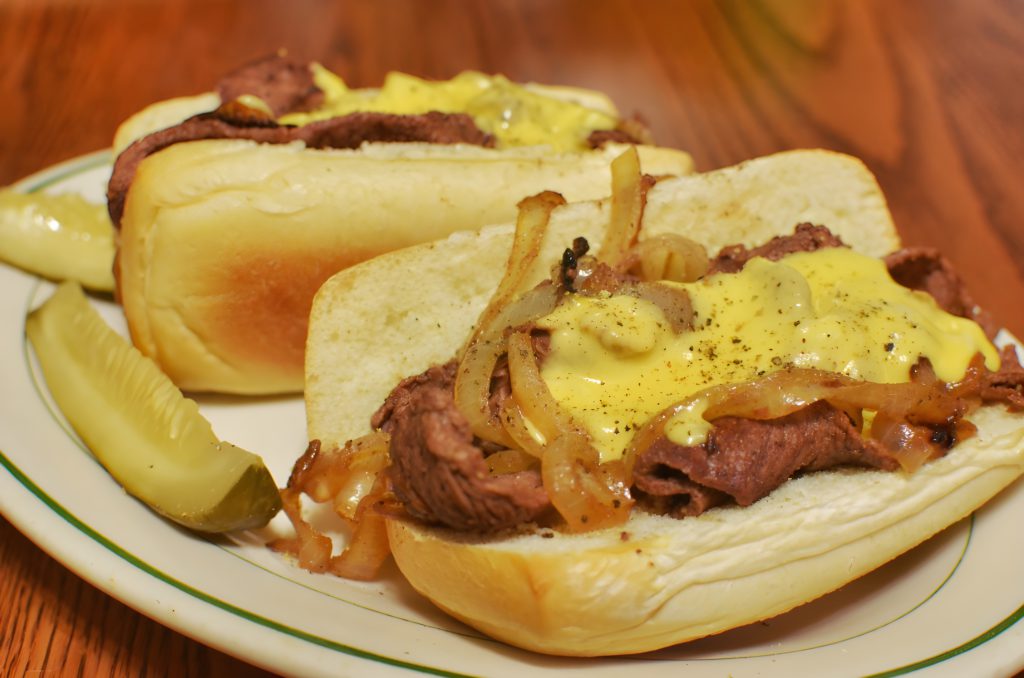
The Philly cheesesteak isn’t just a sandwich; it’s a religious experience with its own dogma and denominational arguments. Visit any Philadelphia street corner in the 70s, and you’d witness the sacred ritual: thinly sliced steak sizzling on flat tops with the hypnotic rhythm of a steel drum band, the aroma of melted cheese wafting through city blocks like an airborne invitation.
Eateries piled this holy trinity of beef, onions, and cheese onto hoagie rolls with the generosity of grandmothers at holiday dinners. The great cheese debate – Cheez Whiz, provolone, or American – could start arguments with the intensity of sports rivalries. Some added peppers; purists considered this heresy equivalent to putting pineapple on pizza. The cheesesteak remains a savory tribute to urban fare, born from working-class necessity rather than culinary school innovation.
8. Cuban Sandwich
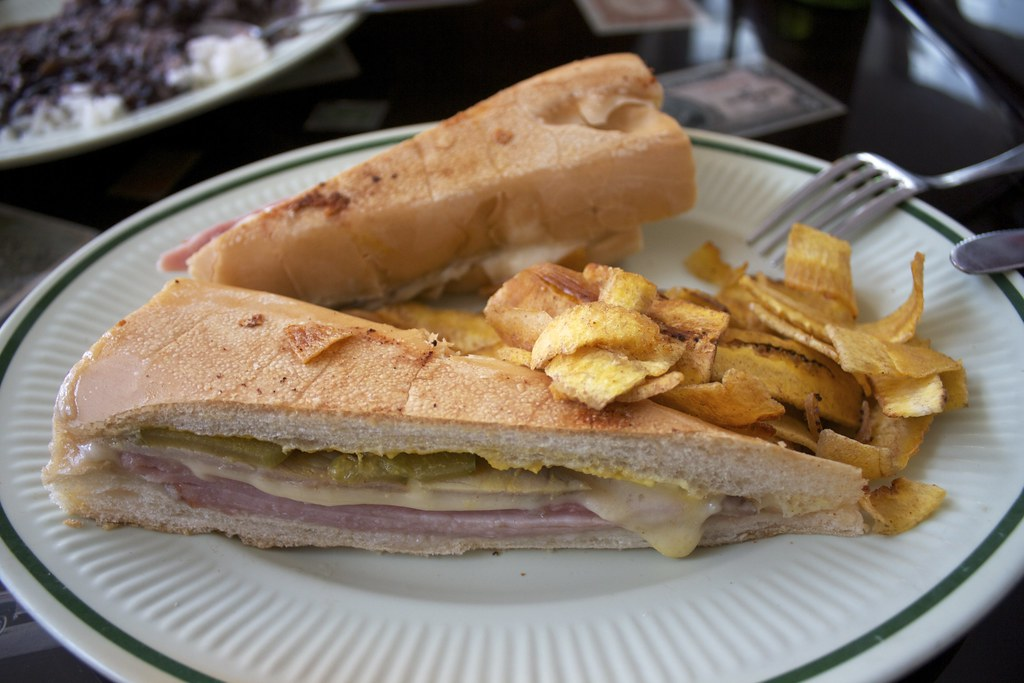
| License
The Cuban sandwich – where pork meets more pork with cheese playing referee. This cross-cultural masterpiece layered roasted pork and ham with Swiss cheese like it was building flavor scaffolding. Pickles and mustard cut through the richness with all the subtlety of a neon sign, providing bright acidity that made each bite compelling.
The bread (which absolutely must be authentic Cuban bread, or sandwich purists will appear out of thin air to lecture you) required proper pressing – flattened with the determination of someone trying to close an overpacked suitcase. Reintroducing the Cuban to your lunch rotation is like rediscovering a favorite album you forgot you owned – instantly familiar and impossibly satisfying.
7. Grinder Sandwich

The grinder sandwich emerged from the necessity of workers who needed lunch with the same industrial strength as their tools. This powerhouse stuffed assorted meats into soft rolls with the abandon of someone who’s never heard of portion control or cholesterol. Melted cheese and savory dressing sealed the deal like a handshake agreement between your hunger and inevitable food coma.
Its straightforward approach to satisfaction made no apologies for its simplicity – this wasn’t food trying to impress anyone; it was fuel designed to get you through the day without requiring a mid-afternoon nap under your desk. The grinder deserves rediscovery as the lunch equivalent of comfortable shoes – not stylish enough for Instagram, but exactly what you need for life’s daily marathon.
fanfare of a reunited boy band – familiar, slightly nostalgic, and surprisingly satisfying even after all these years.
6. Roast Pork Sandwich
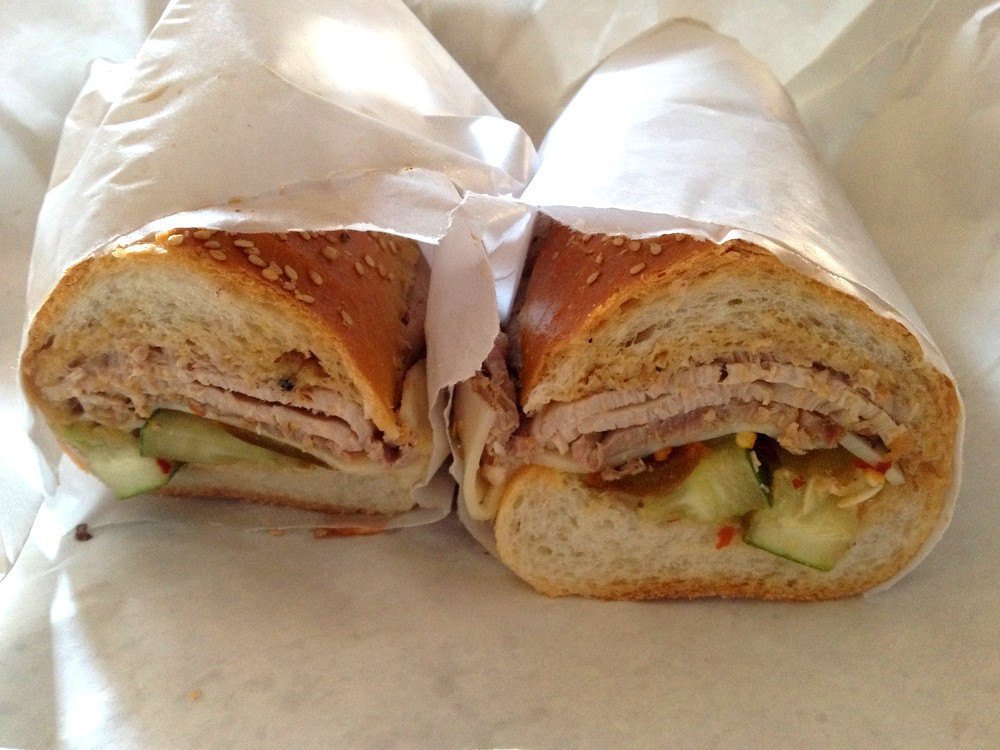
The roast pork sandwich – the unsung hero of the sandwich world, like the bass player in a rock band who never gets the groupies but keeps the whole song together. This understated masterpiece layered thin slices of garlic-infused pork with the precision of a watchmaker, creating flavor that didn’t need to shout to be heard.
Tangy sauce or mustard amplified its natural brilliance like a good lighting designer enhances an already beautiful stage set. This sandwich thrived as the meal for demanding days when your hunger meant business and wouldn’t be satisfied with lightweight alternatives. Rediscovering its robust presence is like finding that perfectly broken-in leather jacket in the back of your closet – somehow even better than you remembered and exactly what you need right now.
5. Chicken Salad Sandwich
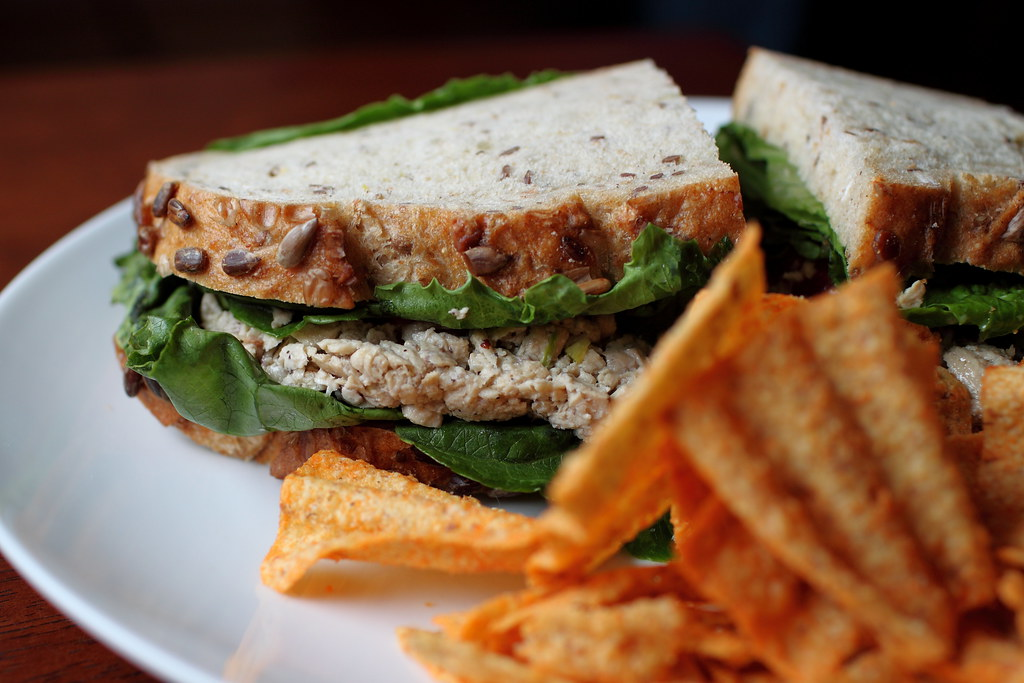
| License
The chicken salad sandwich – proof that mayonnaise can transform leftover poultry into something people willingly eat the next day. This creamy creation mixed diced chicken with celery and grapes (a controversial addition that divided families like political discussions at Thanksgiving). Home cooks crafted this adaptable meal with the resourcefulness of Depression-era grandmothers, transforming Sunday’s roast chicken into Monday’s lunch with a little mayo magic.
Summer picnics thrived on this portable protein, served between slices of toasted bread that attempted to contain the inevitable chicken exodus with each bite. Whether you’re team grape or team “fruit doesn’t belong in savory salads,” the chicken salad sandwich remains a summer classic – the culinary equivalent of a beach read: not intellectually challenging but perfectly satisfying in its context.
4. Roast Beef Sandwich
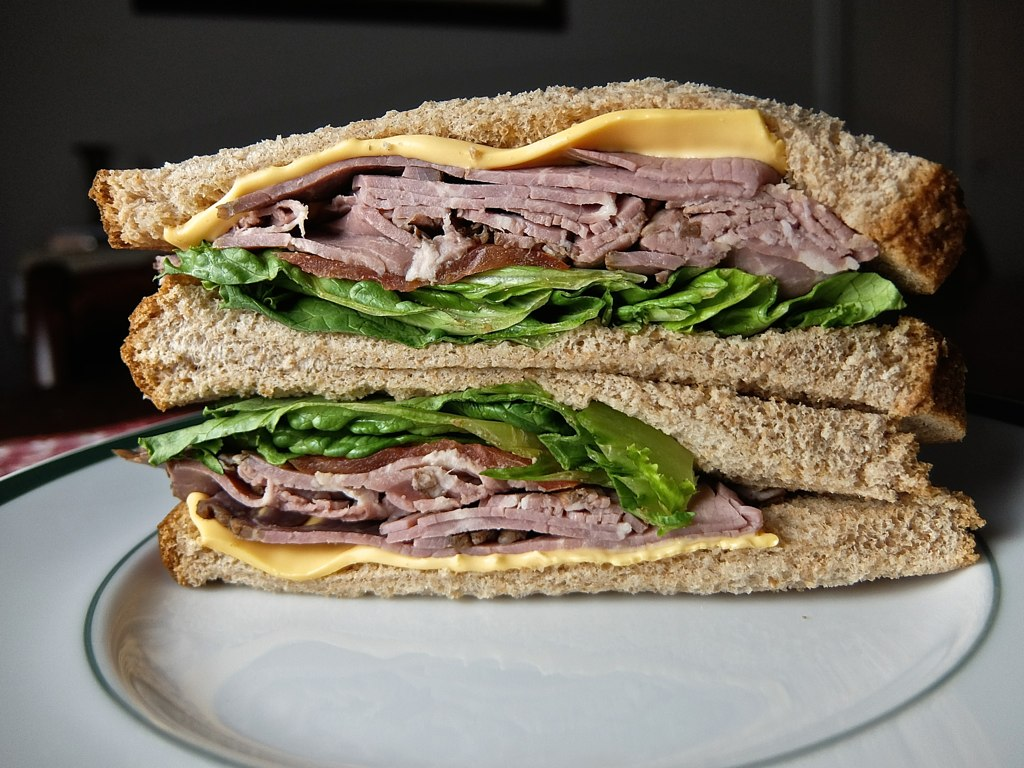
| License
The roast beef sandwich was the heavyweight champion of lunch options – showing up with substance and satisfaction while lighter fare cowered in the corner. Thick, rosy slices of beef lounged on bread like they were at a day spa, unconcerned with modern notions of portion control or cholesterol awareness.
Horseradish or au jus amplified the flavor from “simply delicious” to “should probably be illegal in several states.” This sandwich found its audience primarily among the working class, who needed fuel for physical labor, not dainty finger foods that require fourteen bites to constitute a mouthful. Roast beef sandwiches remain flavor bombs ready to demolish hunger with the efficiency of a wrecking ball – subtle as a sledgehammer and twice as effective.
3. Fluffernutter Sandwich
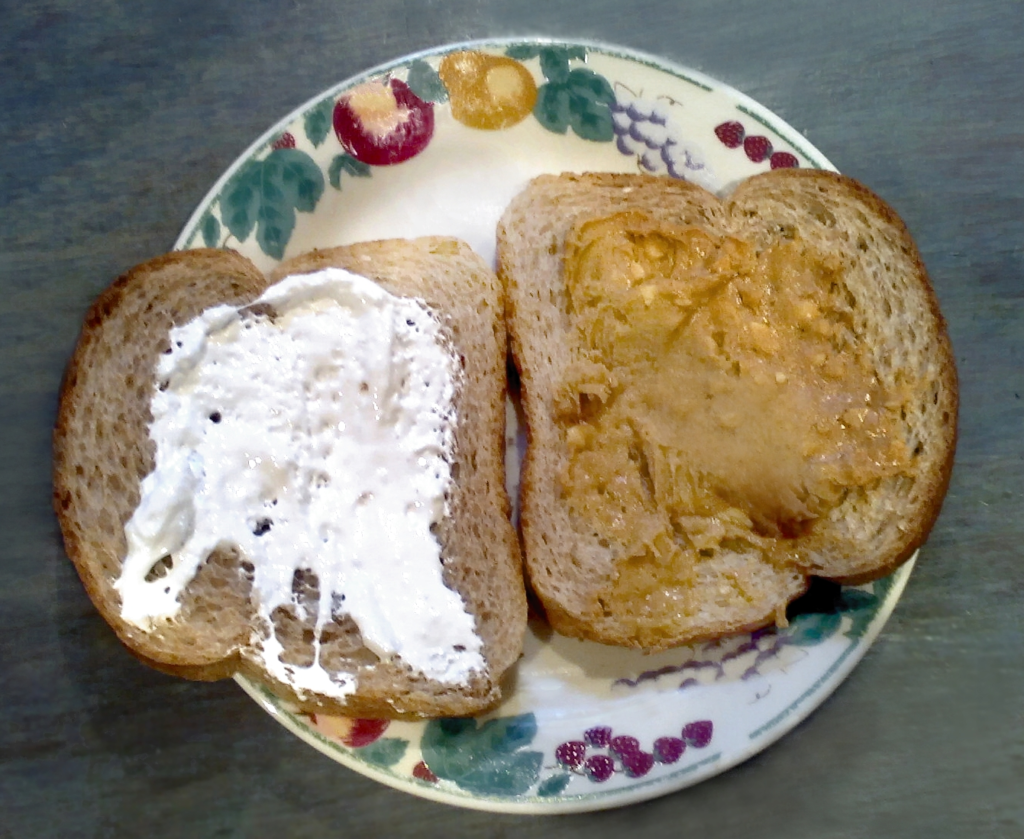
The Fluffernutter sandwich wasn’t just a food; it was dessert masquerading as lunch with the conviction of a child wearing a fake mustache to get into an R-rated movie. This sugar delivery system combined peanut butter with marshmallow fluff in a gooey partnership that delighted children and horrified dentists in equal measure.
Its playful combination brought joy to lunchboxes with all the subtlety of a sugar rush during a library quiet hour. Even adults with allegedly mature palates secretly enjoyed this confection while pretending to eat it “just because the kids wanted it.” The 1970s marked this sandwich’s heyday, before parenting magazines started featuring articles about childhood diabetes. The Fluffernutter deserves a comeback – it’s the sandwich equivalent of playing hooky from work for no good reason other than your soul needed a day off.
2. Egg and Cress Sandwich

| License
The egg and cress sandwich brought British refinement to American tables with all the cultural authenticity of Madonna’s brief English accent phase. This delicate creation combined hard-boiled eggs with peppery watercress on softly buttered bread – ingredients so simple they practically apologized for not being more complicated.
Enjoyed primarily at brunches where people wore outfits that required dry cleaning, it offered a refreshing alternative to heavier options. A subtle charm underscored its fresh, clean flavors like a well-placed semicolon in prose; noticeable mainly by those paying close attention. This egg and cress creation deserves rediscovery as the sandwich equivalent of a perfectly tailored white shirt – not flashy, but impeccable in its execution.
1. Veggie Delight Sandwich
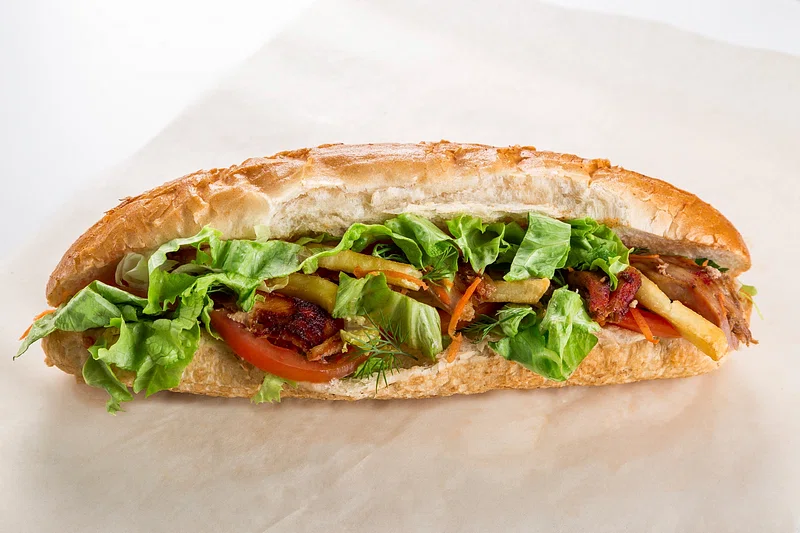
The veggie sandwich of the 1970s wasn’t just ahead of its time; it was living in a future where people voluntarily ate vegetables without hiding them under cheese. This revolutionary concept combined fresh produce with whole-grain bread in a creation that health enthusiasts embraced with the enthusiasm of people who probably also enjoyed jogging before it was cool.
Cream cheese or hummus added creamy texture, attempting to convince skeptics that plant-based food could actually satisfy hunger rather than just decorate a plate. Its fresh flavors brought unexpected taste dimensions to a decade otherwise characterized by Jell-O salads containing marshmallows and canned fruit. The veggie sandwich provided nourishment without the subsequent need for a nap – perfect for those who want to virtue signal their healthy eating habits while secretly wishing they were eating a Reuben instead.





















